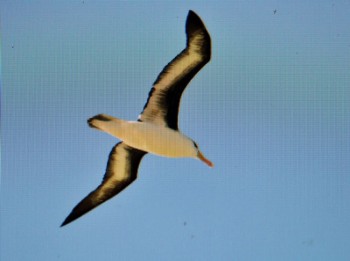Nicole Schumann (School of Life and Environmental Sciences, Deakin University, Burwood, Australia) and colleagues have published in the Australian journal Emu on numbers of burrowing seabirds in the Bass Strait of Australia, including of Short-tailed Shearwaters Puffinus tenuirostris.
The paper’s abstract follows:
”The present study provides the first complete estimate of the abundance and distribution of burrowing seabirds in northern-central Bass Strait, a key region for breeding seabirds in south-eastern Australia. The estimated total number of breeding burrows in the region in 2008–11 were 755 300 ± 32 400 (s.e.) burrows of Short-tailed Shearwaters (Ardenna tenuirostris), 26 700 ± 3500 of Little Penguins (Eudyptula minor), 19 100 ± 2200 of Common Diving-Petrels (Pelecanoides urinatrix) and 4200 ± 2700 of Fairy Prions (Pachyptila turtur). These represent substantial proportions of the total estimated Australian breeding populations of these species: 6% of the total population of Short-tailed Shearwaters, 14% of Little Penguins, 0.4% of Fairy Prions and 13% of Common Diving-Petrels. Based on the number of active burrows, the number of breeding Short-tailed Shearwaters in the region is estimated to have decreased 35% between 1978–80 and 2008–11, equivalent to a decrease of 1.4% per annum between 1980 and 2011. The regional population of Little Penguins, however, appears to have increased substantially over the same period. Identification of population trends of the other species is limited by a lack of previous data. The importance of this area for burrowing seabirds and the substantial decline in numbers of Short-tailed Shearwaters warrants more frequent monitoring of the abundance of seabirds in the region to allow a robust comparison of changes in populations over time as well as the identification of possible causative factors.”

Short-tailed Shearwater, photograph by Kirk Zufelt
Reference:
Schumann, N., Dann, P. & Arnould, J.P.Y. 2014. The significance of northern-central Bass Strait in south-eastern Australia as habitat for burrowing seabirds. Emu doi.org/10.1071/MU13048.
John Cooper, ACAP Information Officer, 16 July 2014

 English
English  Français
Français  Español
Español 



